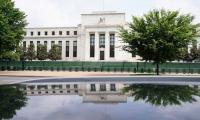After years of economic distress, Pakistan has finally seen a glimmer of hope. The Consumer Price Index (CPI) inflation has dropped to 4.9 per cent, the lowest in over six years. This marks a significant turnaround from last November, when inflation surged to a staggering 29.2 per cent, leaving households grappling with unbearable costs. Since the Covid-19 pandemic, the economy has been in a downward spiral, with a majority of Pakistanis slipping below the poverty line. The crisis deepened as even the wealthy saw declines in their incomes, while low-income families dependent on charity faced crippling hardships. The road to recovery has been fraught with challenges. Just as Pakistan was beginning to stabilise, the 2022 Russia-Ukraine war disrupted global supply chains, exacerbating economic woes. The soaring value of the dollar, aggressive US Federal Reserve interest rate hikes, and the reluctance of wealthy Middle Eastern allies to offer financial aid further strained the economy. These external shocks compounded domestic vulnerabilities, keeping inflation alarmingly high.
In response, Pakistan’s government adopted aggressive measures to rein in inflation. Interest rates were raised to a peak of 22 per cent before easing to 15 per cent. Higher import duties on non-essential items curtailed unnecessary expenditure and created breathing space for local industries. The stability of the rupee and timely
approval of an IMF loan also proved critical in stemming inflationary pressures. Prime Minister Shehbaz Sharif lauded this economic milestone during a federal meeting on Monday, suggesting it could lead to further reductions in the State Bank of Pakistan’s policy rate. While this progress is commendable, the path forward demands caution. The temptation to slash interest rates too quickly could backfire, given the fragile nature of both domestic and global economic stability. Much of Pakistan’s inflation is driven by external factors, and the global economy has yet to stabilise. Ill-timed or overly ambitious monetary policies risk undoing the hard-won gains and plunging the country back into economic turmoil.
Beyond monetary policy, Pakistan’s leadership must address the underlying structural issues that continue to burden ordinary citizens. Creating sustainable employment opportunities is essential to ensuring that people not only survive but thrive. The government must also abandon counterproductive measures, such as internet restrictions, which stifle economic activity and hinder livelihoods in an increasingly digital world. A clear, consistent economic vision will be vital for ensuring that this progress is not just temporary relief but a stepping stone towards sustained growth. This rare moment of good news offers Pakistan a chance to reset its priorities. All political stakeholders must put aside petty squabbles and focus on building a resilient, inclusive economy. A united effort to complement favourable economic indicators with tangible improvements in citizens’ lives can pave the way for lasting prosperity. Pakistan has weathered immense hardship, and this hard-won progress must be safeguarded and sustained.
As such, maintaining current reform and stabilisation agenda, with help of IMF, remains crucial to country’s future...
Attack occurred at workshop located in Mehrestan district, near Afghanistan border
There is no credible evidence to suggest that women wearing hijabs in sports are linked to radicalisation
Pakistan was among four countries that accounted for nearly half of estimated 260,000 maternal deaths worldwide in 2023
Message from the public is loud and clear: people are losing hope
Political observers have also rightly pointed out that PTI’s current strategy risks isolating it on both fronts







